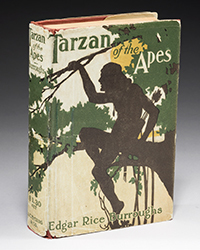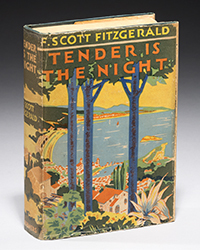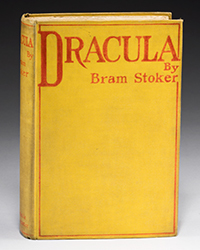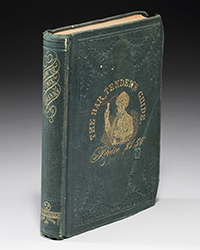Rare Book Monthly
Slavery in the United States <br> Chapter 9
Most of them are permitted to raise a hog, to dispose of as they please, and these hogs are invariably the largest and fattest on the farm. They also raise fowls of every description, and sell them for the most part to their owners, at a fair price. Their allowance of food is never diminished on these accounts. Their hog, their fowls, their vegetables, their brooms, and baskets, and flag chairs, and many other articles, they are allowed to sell for the purpose of purchasing Sunday clothes and finery, to show off at meetings and other public occasions. In this way, those who are at all industrious are enabled to appear as well dressed as any peasantry in the world. The picture drawn in an article I have found and cut from the Virginian, a paper published in this place, is strictly a correct one, and leaves me no more to say on this part of the subject.* (See extract from a letter to the editor of the Albany Daily Advertiser, p. 226.)
"6. 'The provision made for their food and clothing, for those who are too young or too old to labour.' The slaves always prefer Indian corn-meal to flour. Of this, the old and young, in this part of Virginia, are allowed just as much as they can eat or destroy. They have, besides, a certain quantity of bacon given out every week, amounting to about half a pound a day for each labourer or grown person. When they have beef or fish, the allowance of bacon is less; but, as it is the food they love best, they have always a portion of it. Besides this, they have milk and vegetables on most farms in abundance, without touching their own stores. The old and infirm fare like the rest, unless their situation requires coffee, sugar, &c, which are always provided. The young slaves have also their meats, but less in quantity, and they depend more upon bread, milk, and vegetables. To look at them, you would see at once they are well fed. On small farms the slaves fare better than on large ones, there being little difference in the food of the whites and blacks, except in articles of mere luxury. But, on the largest, their usual allowance is that which I have mentioned. They have three meals a day, and it is rare to see them eating what they call dry bread at any one.
"Their allowance of clothing is quite uniform, and consists of a hat, a blanket, two suits of clothes, three shirts or shifts, and two pair of shoes, a year. The winter suit is of strong linsey cloth; the summer, of linen for the men, and striped cotton for the women. The men's cloth is dressed and fulled. The children have linsey and cotton garments, but no shoes or hat, until they are ten or eleven years old, and begin to do something. Their beds are sometimes of feather, generally of straw, and are well furnished: some prefer to lie like the Indians, on their blankets.
Comparing their situation in respect to food and clothing with our own white labourers, I would say that it is generally preferable. In each case, much depends on the industry and management of the party; but there is this difference, that the slave, however lazy or improvident, is furnished with food and clothing at regular periods, which the white man of the same temperament, is unable to procure. When the white man, too, is so old and infirm that he can no longer labour, his situation is truly deplorable, if he has laid up nothing for support. But the old and infirm slave is still supported by his master, with the same care and attention as before. He cannot even set him free without providing for his maintenance, for our law makes his estate liable.
"7. 'Their treatment when sick.' Being considered as valuable property, it might naturally be concluded that they would be properly attended to when sick. But better feelings than any connected with their value as property prompt the white family to pay every attention to the sick slave. If it is deemed at all necessary, a physician is immediately called in. On large farms he is frequently employed by the year; but, if not, he is sent for whenever there is occasion for his services. If the slave is a hireling, our law compels the owner, not the hirer, to pay the physician's fees, so that the latter has every motive of interest to send for a physician, without being liable for the expense. Where there are many slaves together, the proprietor sometimes erects a hospital, provided with nurses and the usual accommodations. In all cases coming under my observation, whatever is necessary for the comfort of the sick is furnished, as far as the master has means. They are frequently visited by the white family, and whatever they wish to have is supplied. Such indulgence, and even tenderness, is extended to them on these occasions, that it sometimes induces the lazy to feign sickness; but I have never known them, in these suspected cases, to be hurried to their work until their deception became manifest, or the report of the physician justified it. It is my decided conviction that the poor labourers of no country under heaven are better taken care of than the sick slaves in Virginia. There may be, and no doubt are, exceptions to many of these observations; but I speak of their general treatment as I have known it, or heard it reported.
"8. 'Their rewards and punishments.' Of rewards, properly speaking, the slaves have few— of indulgences they have many, but they are not employed as rewards, for all usually partake in them without discrimination. The system of rewards has not, to my knowledge, been fairly tried. Sometimes slaves who have conducted themselves well, or laboured diligently, are allowed more time than others to attend to their own affairs, or permitted to trade on their own account, paying some small sum, and they are treated, of course, with greater respect and confidence than the idle and worthless. But I know of no instance in which specific rewards have been offered for specific acts of good conduct. In this respect they are treated much like soldiers and sailors.
"As to their punishments, about which so many falsehoods have been published, they are rare, and seldom disproportioned to the offence. Our laws are mild, and make little discrimination between slaves and free whites, except in a few political offences. The punishments inflicted by the master partake of the same character. The moral sense of the community would not tolerate cruelty in a master. I know of nothing which would bring him more surely into disgrace. On a farm where there may be one hundred slaves, there will not, perhaps, be one punished on account of his work during the year, although it is often done in a careless, slovenly manner, and not half as much as a white labourer would do. For insolent and unruly conduct to their overseers, for quarrelling and fighting with each other, for theft and other offences, which would send the white man to the whipping post or penitentiary, they are punished more frequently, but always with moderation. Very often they escape altogether, when the white man would certainly be punished. I have lived in different parts of Virginia for more than 30 years since my attention has been directed to such subjects; and I do not recollect half a dozen instances in which I ever saw a grown slave stripped and whipped. Such a spectacle is almost as rare as to see a similar punishment inflicted on a white man. When it is considered that, except for the highest grade of crimes, the punishment of the slave is left pretty much (practically) to his master's discretion, I am persuaded it will be found that they are in this respect in no worse condition than labourers elsewhere. No other punishment is inflicted except stripes or blows. They are not imprisoned, or placed upon short allowance, or condemned to any cruel or unusual punishments from which white persons are exempted. The disgusting prints of the abolitionists are mere fancy pieces, to which there is nothing among us bearing any similitude.




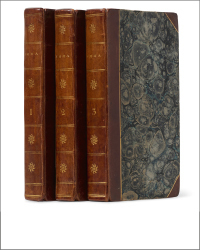
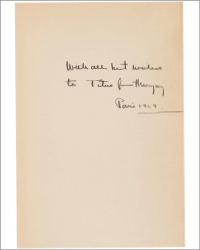




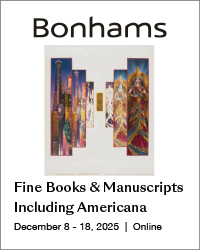

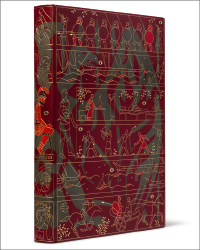
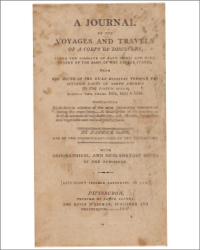
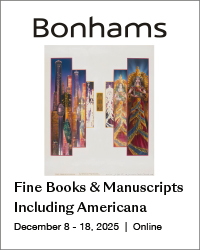
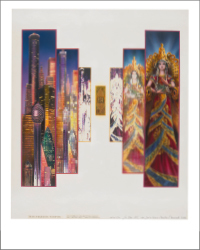
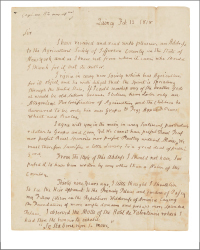

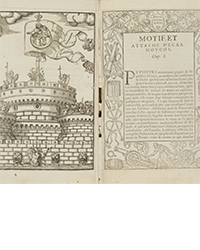
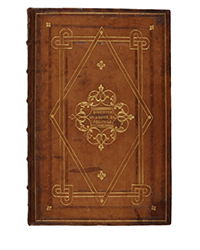
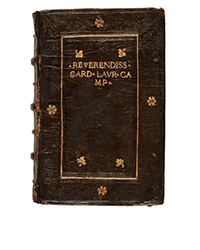
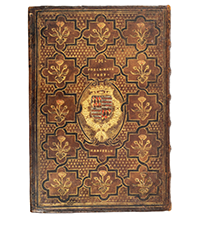
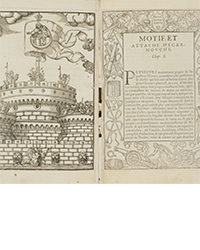
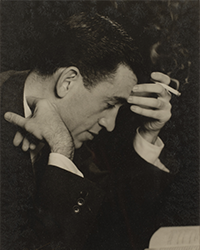
![<b>Sotheby’s, Dec. 16:</b> [Austen, Jane]. A handsome first edition of <i>Sense and Sensibility,</i> the author's first novel. $60,000 to $80,000. <b>Sotheby’s, Dec. 16:</b> [Austen, Jane]. A handsome first edition of <i>Sense and Sensibility,</i> the author's first novel. $60,000 to $80,000.](https://ae-files.s3.amazonaws.com/AdvertisementPhotos/9a74d9ff-42dd-46a1-8bb2-b636c4cec796.png)


![<b>Heritage, Dec. 15:</b> John Donne. <i>Poems, By J. D. With Elegies on the Author's Death.</i> London: M[iles]. F[lesher]. for John Marriot, 1633. <b>Heritage, Dec. 15:</b> John Donne. <i>Poems, By J. D. With Elegies on the Author's Death.</i> London: M[iles]. F[lesher]. for John Marriot, 1633.](https://ae-files.s3.amazonaws.com/AdvertisementPhotos/8caddaea-4c1f-47a7-9455-62f53af36e3f.jpg)
